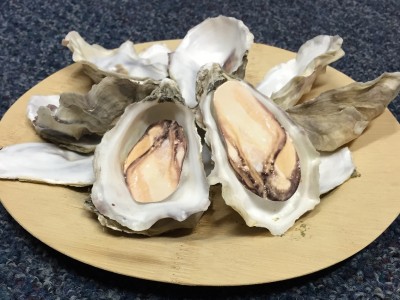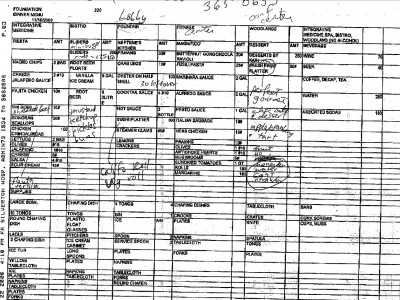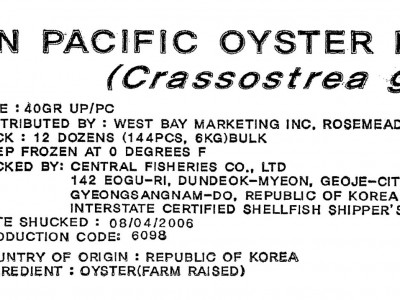| Outbreak: Frozen Oysters | |
|---|---|
| Product: Frozen Oysters | Investigation Start Date: 11/22/2006 |
| Location: Marion County, OR | Etiology: Norovirus GI |
| Earliest known case onset date: 11/15/2006 | Latest case onset date: 11/17/2006 |
| Confirmed / Presumptive Case Counts: 2 / 11 | Positive Samples: 1 |
A rapid investigation of a Norovirus outbreak implicated commercially frozen oysters on the half shell that were thawed and served raw. Over 25,000 pounds of product from the same lot was embargoed by the FDA, which was then considering further restrictions on this type of product, which had been imported from Korea.
Background
On November 22, 2006, an infection control nurse notified the Marion County Health department about acute gastroenteritis among persons who attended a reception at a medical facility on November 16, 2006, and began at 6:00pm. The county asked the state health department to join the outbreak investigation.
Methods
After interviewing the caterer, organizers, and several attendees, we modified a questionnaire template to reflect potential exposures. This questionnaire was used in a retrospective cohort study among reception attendees identified from a ticket list of approximately 200 persons. The epidemiologists were able to sample 66 attendees from 50 households.
Results
10 persons met the case definitions of acute gastroenteritis, 53 had no symptoms, and three were excluded due to minor symptoms. Acute gastroenteritis cases were defined as reported vomiting or ≥ 3 loose stools within a 24 hour period within 18–72 hours of the event.
The median incubation period was 36 hours (range, 31–63 hours). Two stool samples were obtained, and both tested positive for norovirus (1 positive for genogroup II and 1 positive for both I and II). Illness was associated with consumption of raw oyster on the half shell, which was reported by 9 of the 10 cases (RR 11.8; 95%CI 2.8–50; p=0.0001). No other foods were associated with illness.
The oysters had been individually quick frozen on the half shell and packed loosely in cartons after being harvested in South Korea by growers approved by the US Food and Drug Administration. The oysters are pressure-treated to crack the shell, and then blast-frozen on the half shell in trays with a plastic seal over each tray. These oysters were packed in cardboard cartons—144 oysters with a net weight of 6-kg per box. For the reception, a single 6-kg box of oysters was thawed and served raw. The box was from a shipment of 2,200 boxes legally imported in October 2006. Boxes from the same shipment had been distributed to 5 states. No similar outbreaks were reported in the other states that got oysters from the same lot, though case-finding efforts vary. FDA tested oysters from the implicated lot and found Norovirus.
Lessons learned/historical significance
Although most reported foodborne norovirus outbreaks may stem from ill food handlers, it is important to rule out contaminated foods as the source of illness.
Because thorough outbreak investigations are time-consuming and gastroenteritis outbreaks are common, resource considerations often affect decisions about how intensively to pursue investigations. Oregon’s use of integrated questionnaire, data entry, and analysis templates facilitated a quick and successful response to the outbreak described here. Questionnaire design, interviews, data entry, and analysis were completed within 6 hours of the initial report, and distributors and regulatory agencies quickly recalled other oysters from the same source, probably preventing additional illnesses. Widespread use of such templates may increase the number of outbreaks that could be investigated thoroughly.



